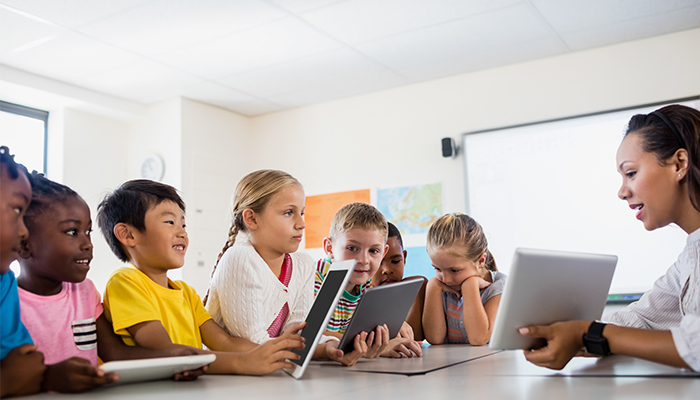The Impact of Digital Education on Traditional Classrooms

Introduction
In recent years, the advent of digital education has revolutionized the traditional classroom experience. With the integration of technology into educational practices, students now have access to a vast array of resources and learning opportunities that were previously unimaginable. This article aims to explore the impact of digital education on traditional classrooms, highlighting the benefits and challenges that arise from this technological shift. By examining real-life examples and quoting influential figures, we will delve into the profound changes that digital education has brought to the realm of learning.
I. Enhancing Learning through Interactive Tools
One of the key advantages of digital education lies in its ability to enhance learning through interactive tools. With the integration of multimedia elements, such as videos, simulations, and virtual reality, students are presented with engaging and immersive learning experiences. These tools enable students to visualize complex concepts, making abstract ideas more accessible and tangible. As Salman Khan, the founder of Khan Academy, once said, “Technology can enable personalized, adaptive learning experiences that give students control over their own education.”
Real-Life Example: The use of virtual reality (VR) in science classrooms allows students to explore inaccessible environments, such as outer space or the deep sea, without leaving the classroom. By wearing VR headsets, students can embark on virtual expeditions and gain firsthand knowledge about various scientific phenomena.
II. Expanding Access to Education
Digital education has significantly expanded access to education, particularly for individuals who face geographical, financial, or physical constraints. Online learning platforms and Massive Open Online Courses (MOOCs) have made quality education accessible to learners worldwide. This accessibility has opened doors for lifelong learners, career changers, and individuals from underserved communities. As former U.S. President Barack Obama once stated, “In a global economy, the most valuable skill you can sell is your knowledge.”
Real-Life Example: Coursera, a leading online learning platform, offers courses from top universities and institutions across the globe. Learners can access these courses anytime and anywhere, providing opportunities for individuals who are unable to attend traditional brick-and-mortar institutions due to various constraints.
III. Fostering Collaboration and Global Connections
Digital education has transformed the traditional classroom into a global learning community. Through online collaboration tools and video conferencing platforms, students can connect and collaborate with peers from different cultural backgrounds. This fosters cultural exchange, enhances communication skills, and prepares students for the interconnected world they will face in their future careers. As education advocate and author Sir Ken Robinson once expressed, “The role of a creative leader is not to have all the ideas; it’s to create a culture where everyone can have ideas and feel that they’re valued.”
Real-Life Example: Platforms like ePals and PenPal Schools connect students from different countries, enabling them to exchange ideas, work on joint projects, and gain cross-cultural perspectives. These experiences broaden students’ horizons and cultivate a sense of global citizenship.
IV. Addressing Challenges and Ensuring Equity
While digital education offers numerous advantages, it also presents challenges that must be addressed to ensure equity and inclusivity. Access to technology and reliable internet connectivity remains a significant barrier, particularly in underprivileged communities. Additionally, the digital divide can exacerbate existing inequalities in educational opportunities. As Melinda Gates, co-founder of the Bill & Melinda Gates Foundation, emphasized, “Technology is just a tool. In terms of getting the kids working together and motivating them, the teacher is the most important.”
Real-Life Example: The One Laptop per Child (OLPC) initiative aims to provide affordable laptops to children in developing countries. By bridging the digital divide, this project seeks to empower students with the tools needed to access educational resources and opportunities.
Conclusion
The impact of digital education on traditional classrooms has been profound and transformative. It has revolutionized the way students learn, expanding access to education, fostering collaboration, and preparing learners for the demands of the modern world. However, challenges such as the digital divide must be addressed to ensure equitable access to digital education for all. As we continue to embrace and integrate technology into educational practices, it is crucial to strike a balance between the advantages of digital education and the irreplaceable role of teachers in facilitating meaningful learning experiences. By doing so, we can maximize the potential of digital education to create a brighter future for learners worldwide.

